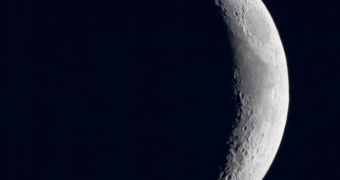The common belief has it that the Moon provides its best viewing period while it is at its fullest and, if you think about it, to some extent, it would make sense. But it is far from being so, claim specialists. In spite of the opinion of those who are strangers to astronomy, the Earth's natural satellite offers its best views between its first quarter stage and its last quarter phase. Furthermore, the full phase is absolutely the worst time to look at it.
This is because, at that time, the Moon reflects all the light from the Sun it receives towards the observer, and every little crack and rock on its surface are so bright that it can hardly be distinguished. It's like a car light or a powerful lantern shining straight into your face. There's no shadow on the face of the Moon that can give a clue on the shape of the objects present there. So, at least from now on, don't use your telescopes or binoculars to scour the lunar surface when it's full.
The line that separates the lit side and the dark side of the Moon is called a terminator, and when the Moon is half lit or in its gibbous stage, it provides a vast amount of sharp details of the features found in its close vicinity. Another myth that is far from being true is that when the satellite is fully lit, it is twice as bright as when it's half lit. Actually, researchers have demonstrated that at that time, the Moon is only 1/11 as bright, compared to its maximum.
This phenomenon is explained by the fact that even when it's half lit, the lunar surface is still highly shadowed, as the light falling from sideways causes all of the features to cast shadows that decrease the brightness amount. Another major factor that should convince you to observe the Moon at the best time possible is that the after-crescent and gibbous stages are visible for longer, in early evening and late morning skies than during the other phases.

 14 DAY TRIAL //
14 DAY TRIAL //